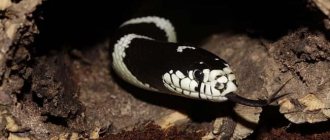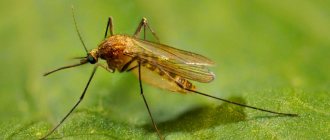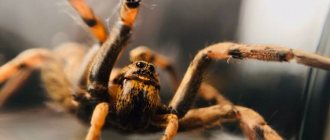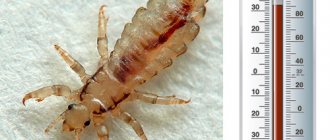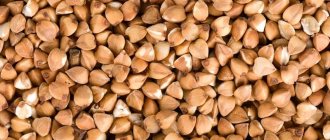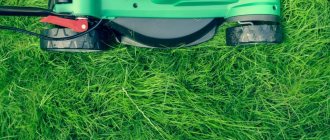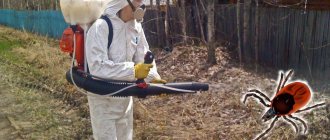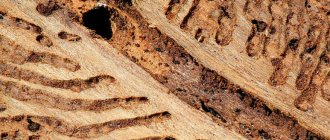- "Soft" methods
Due to climate change, environmental deterioration and human activity, reptiles are increasingly forced to leave their usual habitats. Meeting a snake near a summer house or in a garden is a fairly common occurrence today, and many summer residents want to find the most effective way to get rid of snakes on their property. This question is especially relevant if the dacha is located next to a river, lake, forest or abandoned area.
Snakes and vipers are becoming more and more frequent guests of front gardens and vegetable gardens
Forced proximity
Now on many forums you can find many posts from owners of sites in various regions of Russia that there are a lot of snakes, we are almost talking about an invasion. However, this is not quite true. Quite the contrary.
It is we, people, trying to be closer to nature, who buy areas of forests for development, cutting down trees, thereby depriving snakes of their natural habitat. The reptiles have no choice but to look for a place of residence and food elsewhere, namely, in the nearest plots in garden cooperatives. By their nature, snakes do not seek proximity to humans; on the contrary, they avoid them in every possible way. When snakes sense human footsteps in their immediate vicinity, they try to escape as quickly as possible. Some curl up into a ball and stop moving. All this suggests that we scare them no less than they scare us.
Please note that snakes never attack first unless you provoke them with sudden movements and waving of your arms, or unless your presence threatens the safety of their nest or offspring. Of course, in many cases you may not notice the snake right away, or you may not see the nest and get close to it, unintentionally provoking an attack. Therefore, they try to drive the snakes out of the area before there are too many of them.
Is it worth killing a reptile?
Some gardeners lure snakes with milk or strawberries, for example, and then destroy them. But killing reptiles is not considered an effective method of controlling them. Not only because it is inhumane and snakes are an important part of the ecosystem - if they are attracted to something in the garden, the reptiles will appear again. And a dying female snake releases special pheromones, the same as when ready to mate. Snakes are especially sensitive to this smell; dozens of them flock to the site.
A snake will never attack a person first, except when he is near the nest - then it will protect its offspring
If you do have to kill a reptile, do not touch it with your hands under any circumstances. The smell will remain on the skin for a long time and will serve as a “beacon” for other snakes. Wearing rubber gloves, pack the corpse in a sealed plastic bag and take it away from the area. The same is done with shed skin.
Poisonous or not?
Before selecting methods and techniques for expelling snakes, you need to determine what specific species you are dealing with. Because not all chemicals are equally effective for all species at the same time. When you see a snake on your property, the first thing you need to do is determine whether it is poisonous. It's very easy to do. Pay attention to the image.
Poisonous snakes have a triangular head; it is in the corners that the glands that produce poison are located. Their mouths contain teeth, and their pupils are shaped like a cat's. Non-venomous snakes do not have teeth, and their head is a continuation of the body and has a rounded shape. can most often be found in Russia :
- Snakes;
- Polozov;
- Vipers;
- Copperfish.
Snakes and snakes are not poisonous and in this regard are safe for humans. It is very easy to recognize them. It has yellowish, rarely white ears. And snakes have a yellow belly.
Copperheads are mistakenly considered poisonous, but this is not true. Their bite is not fatal. You can recognize the copperhead by its characteristic pattern and color - a copper shade. Pure black individuals are very rare .
The viper has a characteristic color along the spine. Less common, but there are vipers without a pattern on the body or completely black. The average length of snakes of this species is 70-80 cm, less often, they reach a length of 1 m. A viper bite is not fatal to humans, but it is imperative to provide first aid and take the victim to the hospital.
If you notice any of the listed snakes on your property , under no circumstances:
- Don't lean towards her. The most dangerous thing is considered to be a snake bite on the face. Even if the snake is not poisonous, infection can enter the wound from the cavity of its mouth, and the bite may leave a noticeable scar;
- Do not wave your arms in an attempt to scare away the snake. This behavior will only provoke an attack;
- Don't try to kill the snake. Some species of copperheads and vipers are listed in the Red Book of a particular region. In addition, there is an opinion that when dying, a reptile emits a special smell that will be noticeable by other individuals and will attract them;
- Don't turn your back on the snake and start running away. Just back away slowly and the snake will quickly leave the area.
Which snakes are dangerous to humans?
In early and mid-summer, which is the period of greatest human activity on the site, reptiles become very dangerous. In time, this period coincides with the mating season for reptiles, so their irritability sometimes turns into aggression towards humans.
Not all snakes are poisonous. Snakes, snakes and vipers are more common in central Russia. Of these, only the viper is poisonous. They differ from each other in coloring. This is what they look like in the photo.
Snakes are black or yellow in color, cowardly, but in case of danger they can take a stance and throw themselves at their feet.
snake is the most common. They do not like wet places and prefer to live in dry hay or burrows. They are very aggressive and can jump up to 1 meter away.
Vipers are deadly dangerous creatures. They are black with a gray pattern on the back. It is better to get rid of such snakes in a radical way.
Factors that provoke the appearance of snakes
Most often, snakes are spotted in areas located near or on the territory of a forest belt - a habitat familiar to snakes.
there may be several reasons why reptiles have chosen your property
- Your site is in disrepair. That is, there are heaps of construction debris, dry branches from cut trees, scattered pieces of slate, etc. A dilapidated house on a neighboring property could also be a pile of garbage for snakes;
- Availability of secluded places. Snakes prefer to make their nests in dark, secluded places. These can be sheds and utility rooms, cellars and basements, sometimes chicken coops, firewood sheds;
- Thickets and tall grass . Dense bushes, raspberry fields and areas with tall, uncut grass are attractive to snakes. If your plot is kept in order, but nearby there are abandoned, unkempt vegetable gardens, the perimeter of which is overgrown with tall grass, you will have to improve them a little;
- Availability of food. Snakes feed on mice, rats, lizards, large insects, fish, and frogs. If you have a decorative pond with live inhabitants, snakes can hunt them. If mice live in the area, the reptiles will be provided with sufficient food, and there will be no reason to leave the area. Therefore, in this case, the fight against snakes should begin with the removal of rodents.
Execution cannot be pardoned
If you decide to get rid of snakes on your summer cottage, then perhaps you will soon be prepared to fight an invasion of rodents, such as mice or rats. In most cases, it is their populations that are attractive to snakes as food.
But the crawling creatures are not fed only by rodents. Frogs, slugs, insects and other pests of your cultural and ornamental crops are the menu of reptiles.
Please also note that, having settled on your land, snakes exclude the settlement of it by other, more dangerous representatives of their order - for example, vipers.
Although sometimes the snakes themselves are dangerous. These are harmless snakes that are more afraid of you than you are of them. But a snake driven into a corner, especially a large one, can cause some trouble. In principle, just the sight of him, hissing in a characteristic aggressive stance, is enough to make a person retreat. But he can bite quite painfully, and much less often, he can wrap his body around your limbs.
The consequences are unpleasant: bites take a long time to heal and are a source of infection, and the grip can be so strong that it can even lead to fractures. But to do this, you need to run into the wrath of a very large representative of your family.
Snake traps
Special snake traps are available for sale. Their designs and operating principles are very primitive.
The trap is a small piece of thick cardboard, or in more expensive versions – plastic, the surface of which is covered on one side with adhesive tape.
Crawling onto the trap, the snake becomes stuck and can no longer move. All you have to do is carefully take the trap with the snake away from the area, free the reptile and let it go. To do this, you will need to pour oil on the snake, which will weaken the effect of the glue. The inconvenience is that you need to very clearly know the routes of movement of the snake around the site in order to set a trap exactly on its route. Relying on chance, you can wait a very long time. To increase the likelihood of being caught, bait can be placed on the trap. For example, sweet berries or grasshopper. The most popular snake traps are:
- "Easy Gift 5 Pcs Butter Scented Humane Trap". The trap is convenient because its size is larger than many others. When unfolded, it is a square 32x32 cm. It can also be rolled into a tube. A simple device is made from thick cardboard and non-toxic glue;
- "Catchmaster 402 Baited Rat, Mouse and Snake Glue Traps". Two traps in one package designed to catch mice, rats or snakes. However, the trap can only hold small reptiles;
- "Humane Snake Trap by Snake Trap". A more “advanced” trap with a closed body made of plastic and impressive internal space. The closed design eliminates the possibility of kittens and puppies getting caught in the trap, which cannot be said about the two above-mentioned models.
How to catch a viper in the country
To catch a snake at your dacha, and then remove it from the site, you can use such means as glue traps and cages.
The best option is a glue trap. It is larger in size than a rodent trap. This trap is made simply: from glue and cardboard. Such traps do not kill the snake, but simply deprive it of the ability to move for a short time.
Both glue traps and cages can be made independently or purchased in stores.
Read our article: How to get rid of moles on your property
Repellents
Repellents have proven themselves in the fight against rodents and insects, but with snakes everything is a little different.
The strong-smelling active ingredients of the drug should repel uninvited guests.
But considering that the tongue is the organ of smell in snakes, whether the repellent affects it or not is a matter of chance. If the snake touches the substance with its tongue, it will leave; if not, it will crawl over it and go in the direction it needs. If you decide to try this method, choose from the following repellents:
- "Dr. T's 4-Pound Nature Products Snake Repelling Granules" . The drug is in the form of granules, the active substances of which are sulfur (28%) and naphthalene (7%). Some summer residents use these two components independently, scattering them around the site. However, this is not as effective. The manufacturer recommends scattering the granules in paths. If you are fighting snakes, the width of the paths should be 10-12 cm, if you are fighting rattlesnakes - 20-30 cm. After each precipitation, you need to re-pour the granules;
- "Havahart 6400 Snake Shield Snake Repillent". The active component of the drug is sulfur and essential oils of pine nuts, cinnamon, and cloves. It is recommended to scatter it along the perimeter of the site, around compost heaps, sheds, firewood sheds in paths 20 cm wide;
- "Sweeney's 5200 All Out Snak Repillent, Granular, 4-Pound". A product with a completely natural composition based on clove, cedar and cinnamon oils. According to reviews, this repellent in most cases helped repel garden snakes, black snakes and copperheads.
When using repellents, not under any circumstances surround burrows and areas where snakes are concentrated with the substance. By creating such a repellent ring, you will only achieve that they will not be able to leave their habitat. Do not use them indoors and be careful that the granules do not fall into the hands of a child.
Biological drugs
One of the methods of repelling snakes is the use of biological substances. The drugs are available in the following forms:
- powders;
- liquids;
- granules.
The substances repel reptiles from the area. They contain only natural ingredients. The aromas emitted by biological preparations are unpleasant to snakes. Reptiles, sensing their scent, leave the area treated with bio-components.
One such product is “Snake Repellent OPC”. The bio-repellent releases vapors of essential oils into the air. To spray the area, you need to prepare a working solution: dissolve 100 ml of the product in 1 liter of water. Then spray the areas where snakes are likely to live. One bottle of “Snake Repellent OPC” is enough to treat 150 linear meters (500 m²).
Snake repellers
Considering the mixed reviews from summer residents about certain independent methods of getting rid of snakes, we can come to the conclusion that it is much safer and more likely to achieve what you want with the help of special repellers.
They are a small cylindrical device with a pointed end.
The body can be made of plastic or metal. Repellers can operate on both conventional and solar batteries. To activate, you just need to bury the device in the ground to the recommended depth. Conveniently, the device only needs to work for a couple of days to force the snakes to capitulate. Taking into account the characteristics of reptiles, namely the fact that they do not hear, but only feel vibrations, it is necessary to choose ultrasonic repeller models. Ultrasound itself will not affect them, but it will bounce off the body of the device, thereby forming a noticeable vibration. The best repellers according to user reviews are:
- "EcoSniper LS-107". Its effect covers an area of up to 300 square meters. Four batteries powering the device creates waves with a frequency of 350-450 Hz;
- Weitech WK-0677 Solar. This device is an ideal assistant if your area is attacked not only by snakes, but also by moles or rodents, as it is universal. A special feature of the model is that it operates on a solar battery. Coverage area – up to 350 sq.m.;
- "Tornado BOZ.01." A special feature of this device is its operation at variable frequencies. The duration and frequency of the pulses changes every 15-20 minutes. This eliminates the possibility of snakes becoming accustomed to the stimulus. The repeller operates on batteries and is designed for an area of up to 200 sq.m.;
- "Uniel UDR-S20". The device with a degree of protection against moisture IP44 is powered by a solar panel and produces oscillations at a frequency of 400 Hz. Covered area – 500 sq.m.;
- "HELP". If your plot measures about 625 sq.m., this device will suit you. It is powered by a solar panel, has a durable body made of aluminum and plastic, and has a built-in flashlight between the body and the lid.
Chemical substances
The use of such products is most often used in cases of excessive reproduction of reptiles in the local area. The substances are poisonous and therefore dangerous not only for reptiles. People, pets, and beneficial inhabitants of the site may suffer from their effects. The use of drugs also has an adverse effect on the environment.
When choosing a chemical method for killing reptiles, it is worth studying this issue in detail. The drugs have different effects. Universal substances are designed for long-term operation. Specialized ones are used for certain types of snakes. These factors must be taken into account. Chemical preparations are practically never found on the open market. You can order them only on foreign websites.
Unusual ways
On the Internet you can find very interesting methods, which, nevertheless, in some cases had the desired effect.
- The natural enemies of snakes are hedgehogs, which hunt reptiles quite actively. Some people advise introducing hedgehogs to the area. To do this, every night they need to leave a treat - a plate of milk and pieces of raw chicken. And a completely extreme method of fighting is the “drunk hedgehog”. It has actually been used since medieval times in Hungarian territory. Hedgehogs should be treated to beer or wine instead of milk. A supposedly drunk hedgehog is especially ferocious. But we would not recommend experimenting like this;
- Cats or dogs, especially the Jagdterrier breed, are quite successful at hunting snakes. This method is not recommended if your pet does not have the appropriate character and does not demonstrate hunting skills;
- The smell of some plants, particularly garlic, can repel snakes. You can plant a plant around the perimeter of the site;
- mustard powder has a similar effect
- Install homemade ones around the perimeter of the site turntables, which will create vibration and transmit it to the ground. If you have a lawn on your property, trim it regularly with a lawnmower to discourage reptiles.
If none of the methods helped you , you can always call herpetologists - these are people who specialize in catching snakes.
How to get rid of snakes on your property in simple ways
But if you are not happy with the proximity of reptiles and do not want to meet them, there are many simple ways to get rid of them. Of course, the easiest way to get rid of it is to simply kill it. But killing a snake is not humane. But if you still decide, do not come close to it, take a stick, shovel, brick so that it cannot bite. You can trample it with rubber boots, the viper will not be able to bite through the rubber.
The advantage is that you got rid of it. But at the same time, there is an opinion that after a violent death, snakes emit some kind of odor similar to that emitted by snakes during the mating season. Later, other snakes begin to crawl towards this smell.
How to get rid of snakes using animals
- Get hedgehogs. Hedgehogs trample vipers and gnaw their backbones;
- Hunting cats with a fighting nature can also save you from snakes. But there is one drawback: cats, deciding to show off their prey, drag the reptile into the house, not even alive, which is also not very pleasant;
- Another exotic way is to get a mongoose, but not everyone can afford this method.
Animals cope well with reptiles, but they themselves can suffer from them.
How to get rid of snakes in your summer cottage using folk remedies
- Place sheep's wool around the perimeter of the area. You can use the fur of other animals. The information is reliable, but if the viper is already on the site, it will remain there, although others will not crawl back.
- Sprinkle dry mustard around the perimeter of the area. Snakes do not like the smell of mustard. The downside is that the mustard will be washed away by the rain and you will have to add it again.
- Use bait - warm milk, berries. They are left outside in the evening when snake activity is highest. All that remains is to wait for the snake to crawl, and then destroy it or give it to the serpentarium.
- Make the fence in such a way that it is not possible for reptiles to crawl into the area under it.
Repellers
Snakes do not like strong sound vibrations. Place a piece of iron on the ground and hit it on top with a sledgehammer, hammer, etc. The reptiles are irritated by the vibration in the soil, and they crawl away. There is another repeller EcoSniper ls-107, which drives them away quite quickly.
Chinese powder, which can be ordered online, is very effective in repelling snakes. The trick of the powder is that it is non-poisonous and non-toxic. It can be scattered near chicken coops, around tents in nature, near the house. The powder has a rather unpleasant odor that repels snakes. Outdoors, even in the presence of wind and rain, it remains effective for 2 months, indoors – for 2 years.
The only negative is that the instructions are written in Chinese. To use the powder, first pierce the package in several places and sprinkle the powder in areas where reptiles may appear. Scatter the powder in a thin continuous line and at some distance from buildings, fences, bushes. The larger the radius, the better.
Chemical methods of repelling snakes
It is unlikely that it will be possible to force a snake to eat any poison, so there are no special chemicals to kill them.
According to experts, snakes do not like the smell of chemical solvents. Therefore, when working on the site, wipe the surface of the shoes with a solvent (solvent 646 or white alcohol), saturate the laces on the shoes with the solvent. The smell of solvents will repel reptiles.
Precautionary measures
Once you have successfully cleared your area of snakes, it is important to prevent them from reappearing.
For this:
- Regularly trim the grass on and around the site, remove dry leaves and sawn branches;
- Make it uncomfortable for snakes on your site - destroy the small rodents that make up their diet;
- If you live in close proximity to a forest, snakes will periodically visit you. To prevent them from getting into the area, surround it with a fence. A snake fence is made from a fine-mesh metal mesh, which is dug in around the perimeter to a depth of 25-30 cm. The height of the mesh above the ground should be at least 80 cm. The support posts should be located on the inside so that snakes cannot climb on them. And the mesh fabric itself should be tilted outward at an angle of 30 degrees.
Pets and hedgehogs
Dogs, cats and birds can engage in combat with snakes. All of them are not protected from reptile poison. The Scottish Terrier, bred to hunt rodents and reptiles, bravely enters into battle with a creeping reptile. Turkeys are not averse to eating a small snake. Pigs are not afraid of poisonous bites. A thick layer of fat provides reliable protection. They trample the snake, tired of the attack, with their feet.
Hedgehogs were chosen by nature to control the reptile population. Immunity to poisons allows the animal to engage in battle with the reptile. Having defeated the snake, the hedgehogs eat the prey. Many land owners introduce these animals by presenting them with a saucer of milk. One hedgehog is enough to destroy even an entire population of small snakes. The small predator will clear the local area, garden and small pests.
First aid for a bite
If you are bitten while trying to catch a snake or simply through negligence, it is important to provide first aid correctly.
The following steps
should well known to all members of your family:
- Immediately calm the person who has been bitten . A rapid heartbeat will speed up blood circulation, and the poison will spread faster throughout the body;
- The victim should immediately drink several glasses of liquid . It must be plain or mineral water. Drinking will help speed up the removal of the toxin from the body and slow down the absorption of the poison;
- You cannot drink tea, coffee, or alcohol . The latter thins the blood, allowing the toxin to spread throughout the body faster. For the same reason, you should not treat the wound with alcohol;
- Do not apply a pressure bandage to the bite site. This will cause the poison to concentrate in one place and cause tissue infection;
- Poison can be sucked out from a wound only if the person doing this does not have wounds on the oral mucosa or tooth decay. In this case, the poison that enters the stomach will not pose a danger to the person providing assistance. If there are contraindications to such actions, it is better not to suck out the poison;
- Carefully treat the edges of the bite with brilliant green or alcohol ;
- Do not use potassium permanganate , cut the bite site and cauterize it;
- After this, the person needs to be taken to the nearest hospital or call an ambulance . While you wait for paramedics to arrive, position the person so that the head is lower than the body. This will allow blood to flow faster and easier to the brain.
Your first aid kit must have the following medications:
- Antipyretic;
- Pain reliever;
- Antihistamine;
- Antibiotics;
- High blood pressure medications;
- Medicines for the cardiovascular system.
The article was written for the site.
Tags: Landscaping, Pest control, Dacha
What to do if bitten by a snake - first aid
A snake will never be the first to attack you; it will hiss in advance and try to crawl to the side. But if you step on it or accidentally touch it, it will make a lightning-fast attack and bite. Sometimes people do not notice the moment of the bite, only a moment later they see the snake crawling away from them. Most often, bites occur on the arms or legs. Bites to the neck and head are life-threatening.
Viper venom contains a cytotoxin that attacks the nervous system. Other poisonous substances cause blood clotting disorders and contribute to tissue death.
Bite symptoms
Two small puncture wounds remain on the skin where the snake bit. If the bite is from the side or the viper has one poison-conducting tooth, one puncture remains.
Immediately after the bite, intensely increasing severe pain is noted. Immediately the skin in this area turns red and swells. The swelling spreads quickly upward from the wound. Symptoms of general intoxication do not appear immediately, about half an hour after the bite. Weakness, dizziness, headache, nausea and vomiting gradually develop. Tachycardia, shortness of breath, a state of lethargy develop, blood pressure drops, and the temperature may rise. Possible fainting. In the first three days, blisters and hemorrhages in the skin and mucous membranes appear on the skin.
In severe cases, there is excitement followed by lethargy, heart rhythm is disturbed, breathing is difficult, and bleeding occurs. And as complications, seizures, changes in liver and kidney functions. The development of complications depends
- from the site of the bite,
- the size of a reptile
- height and weight of the victim,
- state of health at the time of the bite of the victim.
Consequences of a snake bite
Deaths from viper bites are rare, no more often than from bee stings. However, being its victim is quite unpleasant and painful. Moreover, if the poison immediately enters the bloodstream, the symptoms develop very quickly, and the consequences in this case are more serious.
First aid not provided on time can subsequently cause complications from the cardiovascular system and other organs.
How to give first aid
- First of all, calm down or reassure the victim - everything has already happened;
- Squeeze the blood out of the wound; along with it, the poison that has not yet been absorbed may come out. Sucking poison from a wound with your mouth is a rather controversial action. However, if there are no wounds in the oral cavity, then no later than 10–15 minutes after the bite, the blood along with the remaining poison is sucked out from the wound and spat out. Even if a small amount of poison enters the stomach, it is neutralized under the influence of hydrochloric acid.
- Treat the wound with any disinfectant except vodka and alcohol;
- To prevent the poison from spreading further through the circulatory system, try to move less. For this purpose, lay the victim down, limit any movements in the limb;
- If possible, to slow down the absorption of the poison, place any cold object on the wound;
- Give the victim more of any warm liquid;
- Get the victim out of the forest as quickly as possible, or call an ambulance right away. Introducing anti-snake serum as early as possible will help avoid serious complications, and recovery will be faster
Good luck to you and stay healthy!
